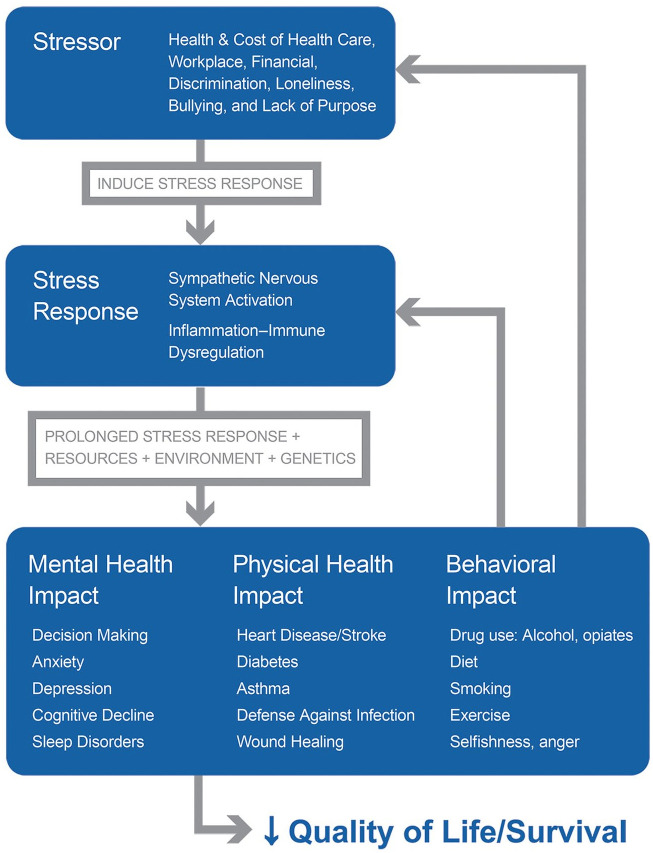Figure 1.
A graphic depiction of how stress can affect people. Multiple different stressors, alone or in combination, are perceived or experienced by the individual. Depending on that person’s reaction, a stress response is evoked, resulting in sympathetic nervous system activation and accompanied by immune dysregulation and inflammation. When sustained for a long time, and influenced by other factors such as personal resources (eg, health literacy, access to care), environment (eg, allergens), and genetics, the stress response elicits varying forms of mental and physical disease. A partial list of some of the sequelae is shown. Behavioral changes are also affected by stress. This is a vicious cycle, in which the aspects of ill health, disability, isolation, and behavior change, in turn, can create more stress, as indicated by gray arrows. Depending on severity, the quality of life can be impaired and mortality can rise.

